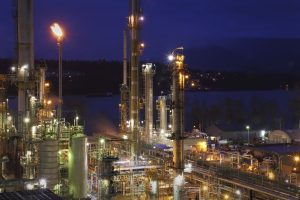The EPA has issued what it calls “narrow” amendments to two provisions of the Agency’s 2016 Clean Air Act New Source Performance Standards (NSPS) for the oil and natural gas (O&G) sector (June 3, 2016, FR). The provisions affect delay of repair requirements when emissions leaks or fugitive emissions are detected as well as emissions monitoring at well sites on Alaska’s North Slope.

The intent of the 2016 rule was to reduce emissions of volatile organic compounds and greenhouse gases (mainly methane) from new and modified O&G operations. Following negative feedback from the industry, the EPA under President Donald Trump and Administrator Scott Pruitt issued a stay of the standards. That stay was found illegal by the D.C. Circuit. The ruling forced the Agency to propose a stay for the individual provisions it seeks to amend; the current action finalizes proposals for two of those provisions.
Delayed repairs
The 2016 rule requires replacement or repair of a component within 30 days of detection of fugitive emissions but allows delaying the replacement/repair under certain situations. The delayed repair must be completed during the next compressor station shutdown, well shutdown, well shut-in; after an unscheduled, planned or emergency vent blowdown (depressurization); or within 2 years, whichever is earlier.
Commenters informed the Agency that by requiring repairs during unplanned or emergency events, the actual emissions could be higher than the emissions of the delayed repair for that component. For example, requiring repairs during unplanned or emergency events may require venting of equipment that is not being repaired and that would not otherwise be vented during that shutdown; this potentially results in greater emissions than those of the leak itself. Furthermore, commenters asserted that prolonged shutdowns may be encountered while repairs are made; this could cause “critical issues” with the provision of power or heat to end users who rely on natural gas.
The EPA found merit in these comments. Accordingly, the final rule removes the requirement for completion of delayed repairs during unscheduled or emergency shutdown, shut-in, or vent blowdown. Owners and operators are still required to complete repairs during the next compressor station shutdown, well shutdown, well shut-in, after a planned vent blowdown, or within 2 years, whichever is earlier.
Alaska’s North Slope
The 2016 NSPS required that O&G owners and operators conduct initial monitoring surveys of fugitive emissions components within 60 days of start-up of production at a new well or within 60 days of modification of those components. The rule further required semiannual monitoring thereafter.
Industry commenters noted that the two monitoring instruments specified in the rule are temperature sensitive. One instrument does not operate at temperatures below –4oF while the second is not designed to operate in temperatures below +14oF. Commenters pointed out to the EPA that temperatures on the North Slope between November and April are often below 0oF. In the 2016 rule, the EPA attempted to address these concerns by allowing “semiannual” monitoring every 4 to 6 months. But the rule did not address temperature concerns regarding initial monitoring.
The EPA amends the 2016 requirements pertaining to monitoring on Alaska’s North Slope in two ways:
- First, new or modified well sites that start up production between September and March must now conduct initial monitoring within 6 months of the start-up of production or by June 30, whichever is later. New or modified well sites that begin production between April and August must continue to meet the 60-day requirement of the 2016 rule.
- Second, the amendments now require annual (instead of semiannual) monitoring of fugitive emissions at well sites. These annual monitoring surveys must be conducted at least 9 months apart but no more than 12 months apart.
The final amendments took effect immediately upon publication in the March 12, 2018, FR.
